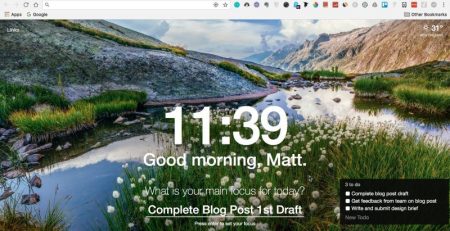How to Grow Your Business Using Press Releases
In the past, press releases were meant to facilitate communication between PR and the media. However, that’s no longer the case today, where various online news sites offer an endless supply of press release content directly to consumers. In this digital age, press releases have moved from being a communication avenue between companies to a valid news source directly available to consumers all over the globe.
However, it doesn’t end there. Beyond being an effective way to distribute content straight from the horse’s mouth, press releases can be syndicated, making an easy opportunity to attract incoming links. A single press release can gain anywhere from a few dozen to hundreds of unique domain name links. Market Wire, PRWeb, Business Wire, PR Newswire, and other press release submission companies make it easy to put news content into news search engines.
Nowadays, searching for news online is so incredibly popular that comScore says that half of everyone on the internet checks out a news site online every single month. With a wide range of sites from Fox to MSNBC and CNN, the top destination continues to be Yahoo! News.
If you recognize just how incredible of an opportunity this presents, then you’re not alone. However, many struggle to achieve proper exposure and get caught up on relatively simple hurdles. To help you avoid many of the same mistakes, here are some critical tips from a press release submission company for making your content as visible as possible.
- Be interesting immediately. It doesn’t matter how interesting your content is if it doesn’t immediately catch the eye of your audience. Make sure you have a focused topic in mind, then deliver a concise message straight to your audience. You want their first impression of your content to be favorable, and the last thing you want is for them to be overwhelmed by what they feel to be information overload.
- Know the psychology of reading. Readers of different languages look to different parts of a page on first exposure. For languages like English that read left to right, then top to bottom, you want to make sure you’re putting your best content in the right areas. Critical keywords, the main thrust, and anything to catch the reader’s eye should start in the top left, making for a perfectly natural reading experience.
- Don’t waste effort. When distributing your news, it may seem tempting to use multiple wire services to maximize your coverage and get the most possible eyes on it, but that can often backfire. If the content is the same, then search engines will likely filter out your duplicates. Consider either using a single wire service or writing slightly different versions for each wire service. Though that involves a little more effort, it can give you the desired result of a bigger audience and appeal to a wider variety of readers.
- Offer secondary benefits. In a world saturated with news, you usually need to provide a little something extra if you want readers to choose your news. It’s common to provide the reader with a specific and tangible benefit like a free trial, special offer, access to a podcast, or free subscription to email newsletters. These offers can come across as intrusive and unappealing if presented too aggressively, but if you manage to frame them as a net positive for the reader and superior to more irritating alternatives, then you increase reader engagement.
- Utilize a landing page. If you want to turn first-time readers into loyal followers, you need to give them something to go on. You can’t rely on hoping that they’ll happen to find your next release in the search results or that they’ll pay attention to your emails. Instead, giving them something they can do right now to interact more with your work. Use links to direct them to a landing page they can bookmark. If nothing else, the very act of interacting with your page and clicking through will increase the chances of them following your content. If you can make them take the two simple steps of finding your initial content and then clicking through to find out more, you’ve already passed the hardest part of building a loyal audience member.
- Use media contacts. If you can use media contacts to propagate your release, then you effectively multiply your reach. Remember that just like with appealing to your average reader on the internet, you need to provide some unique benefit. Where your average reader might be compelled by a free email subscription or a free trial, a media organization would place great value on an exclusive if you were able to demonstrate the value of your release. If you can show some level of familiarity with the individual media writer in question, you can demonstrate a willingness to go the extra mile and do your research, both qualities that media organizations want.
- Make it simple. Though your release may require a certain degree of technicality for specialists within the field, you can’t expect journalists to understand all the jargon. Make sure you have a simple and easily understandable summary at the top of your release if you’re looking to achieve widespread appeal. In many cases, other bloggers will copy and comment on the summary, so if you don’t have one of those, you risk a bunch of articles floating around that misinterpret your work.
- Know your audience. If you want your content to spread throughout social media, make sure you’re tailoring it to your audience. A blog post with a sufficiently casual tone and simple language can go a lot further than a dry press release that restates the hard facts. Posting your press release straight to social media often ends with accusations of corporate-speak and inauthenticity.
Getting new customers finding your business will be a real possibility once you learn how to correctly utilize press releases.









